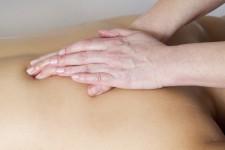Magic hands?

Oooh I ache. I need a massage. Yes, massage and the myth of magic hands goes a long way. Sore muscles seem to know that the touch of a skilled therapist will help wipe away the fatigue and pain of long, hard sessions of training. Maybe even to the point of healing injuries and enabling the person to make a miraculous recovery, rising Lazarus like from the depths of injury to race-winning health within an hour. This, I regret to inform you, does not happen in the real world. No matter how magic you might think a person’s hands are, … Continue reading





